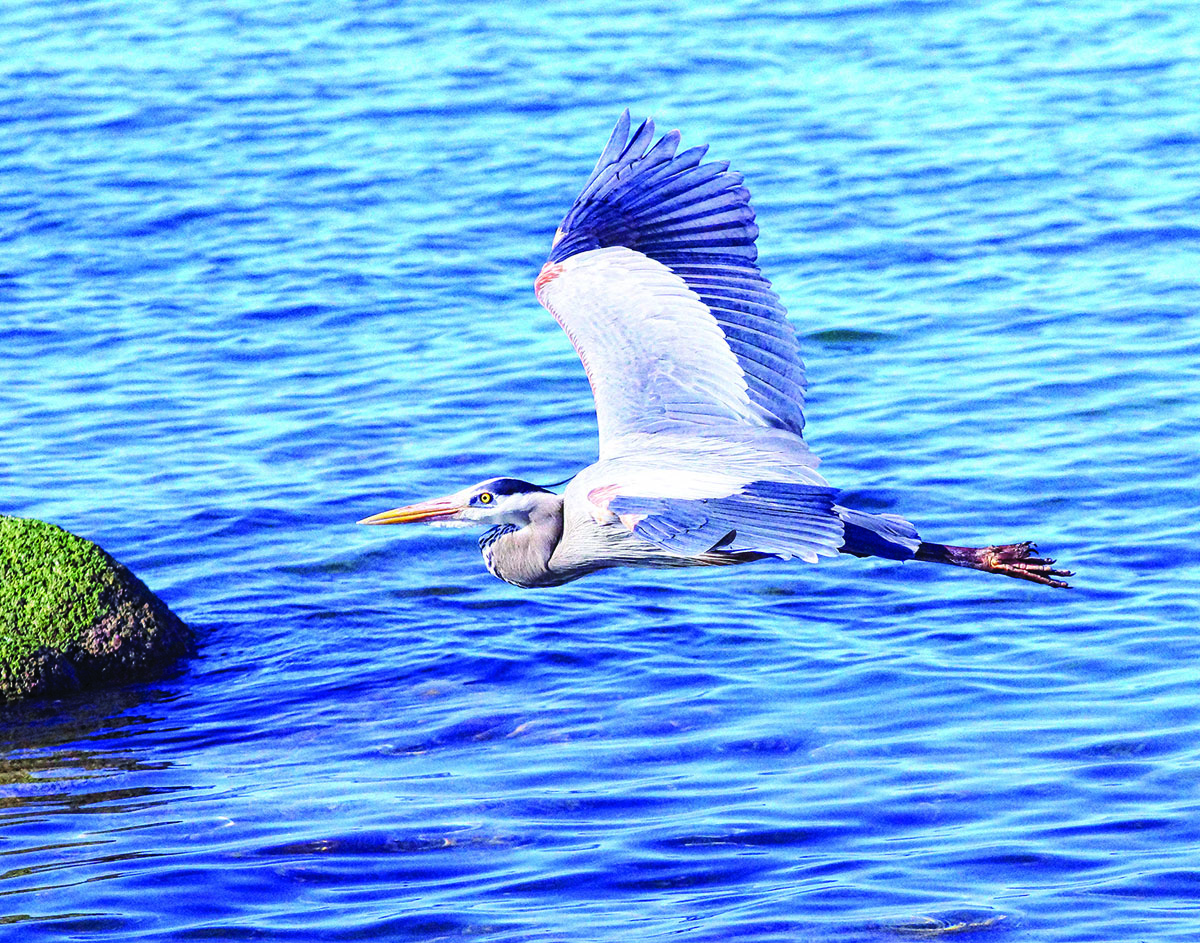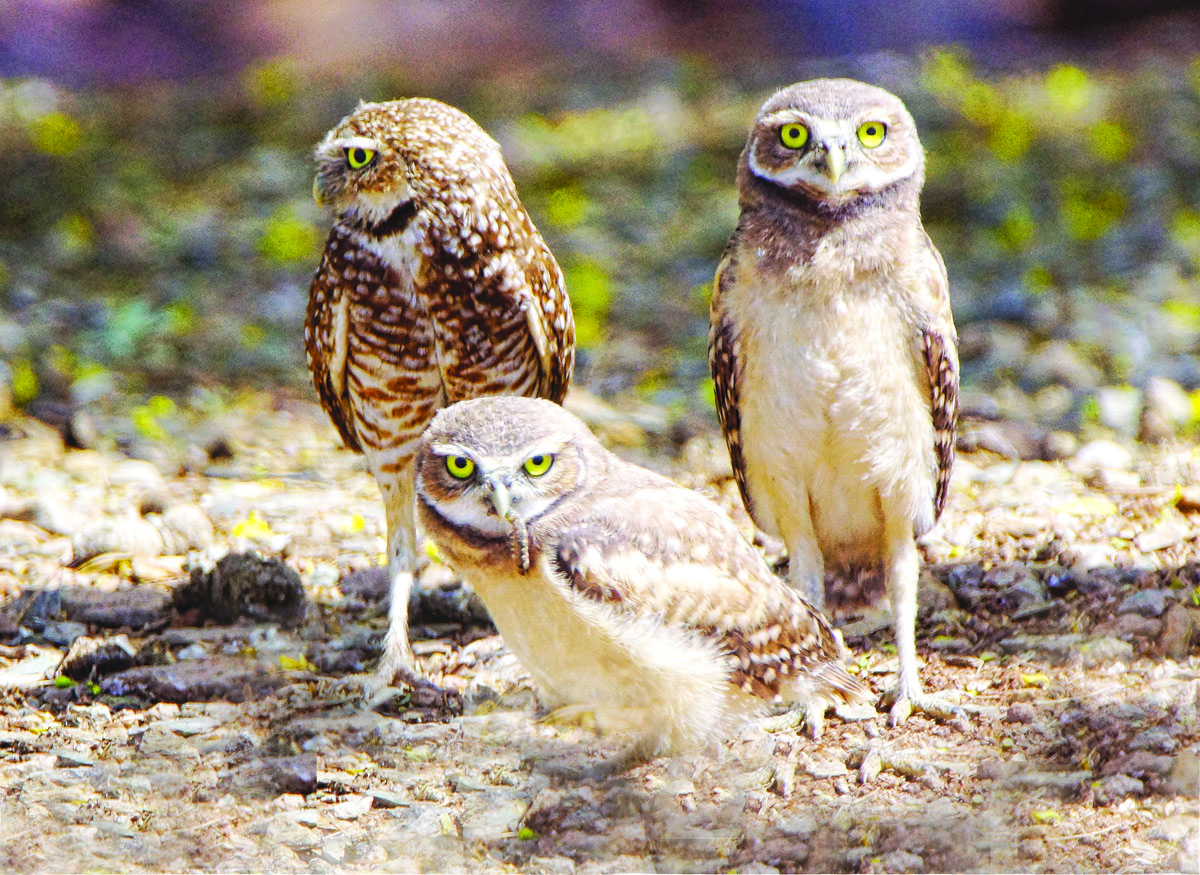Everyone around Rocky Point knows what a pelican is. But, did you know there is only one species of pelican here in our waters? The Brown Pelican is the comically elegant bird with an oversized bill, crooked neck, and big, dark body. The immature brown pelicans (less than 5 years of age) have a predominately brownish grey head. Mature pelicans have a lighter white head with some yellow around their throat and head feathers. During mating season you will see a pretty reddish plumage on the back and sides of the neck. The red throated are my favorite to photograph.
You will frequently observe squadrons of brown pelicans gliding above the surf along the coastline of Rocky Point, rising and falling to a graceful echo of the waves. They feed by plunge-diving from high up, using the force of impact to stun small fish before scooping them up. They are fairly common today, but they are an excellent example of a species’ recovery from pesticide pollution that once placed them at the brink of extinction.
Conservation
Brown Pelicans are a living symbol of how successful wildlife conservation can be. The most interesting fact that most people do not know about the Brown Pelican is they nearly disappeared completely from North America between the late 1950s and early 1970s because of pesticides entering the food chain. The pesticide endrin killed pelicans outright, while DDT contamination led to thin-shelled eggs that broke under the weight of the parents. In 1970, Brown Pelicans were federally listed as endangered. The plight of pelicans and other species led to a ban on DDT in 1972 and a reduction in endrin use, allowing pelican numbers to rise. By 1985, numbers along the Atlantic, Eastern Gulf coasts and Western shores had recovered enough to delist those populations.
The species reached pre-pesticide numbers by the late 1990s and was fully delisted in 2009. Their populations continue their overall strong increases since the 1960s, though pelicans still face human-caused threats. Since they breed, roost, and forage near shipping channels, they are highly susceptible to oil spills. Disturbance from human activity in their coastal nesting habitats can cause problems, as panicked pelicans often abandon or accidentally destroy their nests. The Brown pelican is protected by the Migratory Bird Treaty Act. Abandoned fishing line also threatens this species, along with many marine animals. It has been estimated that more than 700 adult and immature pelicans die each year in Florida alone from entanglement in sport-fishing gear. Most of the pelican carcasses I have come across along the shores of Rocky Point are found to have fishing line wrapped around them.
Behavior
Though they have an awkward gait on land, Brown Pelicans are strong swimmers and masterful fliers. They fly to and from their fishing grounds in V-formations or lines just above the water’s surface. They and the closely related Peruvian Pelican are the only pelican species to perform spectacular head-first dives (typically ending in a huge splash visible from far away) to trap fish. Pelicans usually forage during the day, but may feed at night during a full moon.
Food
Brown Pelicans mostly eat small fish that form schools near the surface of the water—including mullet, anchovies, herring, and sailfin mollies. A foraging pelican spots a fish from the air and dives head-first from as high as 65 feet over the ocean, tucking and twisting to the left to protect its trachea and esophagus from the impact.
As it plunges into the water, its throat pouch expands to trap the fish, filling with up to 2 1/2 gallons of water. The pelican’s bill will rise out of the water and slowly they will push out the water from the pouch and swallow the remaining fish, thereby not swallowing any salt water. This behavior is a sight to behold and I encourage you to observe it up close when you can. Gulls or terns often try to steal fish right out of their beaks.
Pelicans usually feed above estuaries and shallow ocean waters within 12 miles of shore, They occasionally feed by sitting on the surface and seizing prey with their bills. They also steal food from other seabirds, scavenge dead animals, and eat invertebrates such as shrimp. If you see pelican’s diving you can be assured there are bait balls of fish present, which is why a lot of fisherman in Rocky Point follow the pelicans that lead them to the fishing.
Breeding
Highly social all year, pelicans breed in colonies of up to several thousand pairs—usually on small islands or in protected estuaries (like Playa Encanto) where they are free from terrestrial predators. The male defends a nest site and nearby perches for up to 3 weeks until he attracts a mate, and the pair is monogamous throughout the breeding season. The parents incubate their eggs with their feet. If disturbed suddenly they fly hastily, sometimes crushing their eggs, which is why signs are posted in the nesting sights to leave the birds alone. Pelicans regurgitate predigested fish onto the nest floor for their nestlings, later switching to whole fish once the young are big enough. The young can fly and fend for themselves after 3 months, but take 3–5 years of age to reach sexual maturity.
There are usually 2 to 4 eggs per pair that are bleach white when hatched and later turn spotty with staining. The egg size is close to a chicken egg and hatch after about a month of incubation. The newly hatched chicks are helpless with bare pink skin and open eyes.
Cool Facts:
The oldest Brown Pelican on record was 43 years of age.
Sister species are the Peruvian Pelican and the White American Pelican
Brown Pelicans are basically silent and can only grunt a little during mating season.
Photos all by Steve Franklin “Photo Pancholeen” custom orders at sfrank962@aol.com.




























